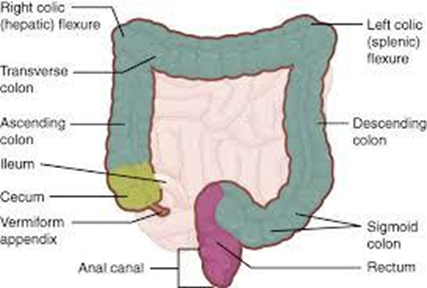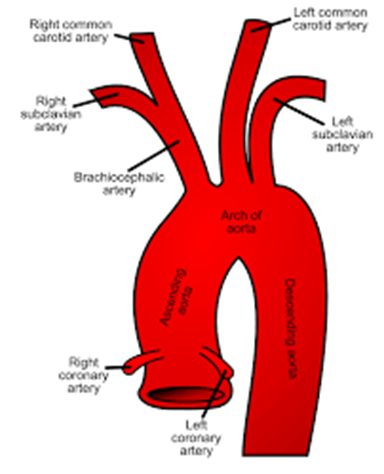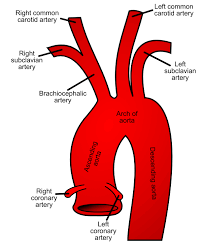Which of the following identifies the hepatic flexure?
Splenic flexure
Right colic flexure
Pontine flexure
Left colic flexure
The Correct Answer is B
a. Splenic flexure: This is the bend between the transverse and descending colon on the left side, also known as the left colic flexure.
b. Right colic flexure: The hepatic flexure, also known as the right colic flexure, is the bend between the ascending and transverse colon near the liver.

c. Pontine flexure: This refers to a bend in the developing brainstem, not the colon.
d. Left colic flexure: This is another name for the splenic flexure, not the hepatic flexure.
Nursing Test Bank
Naxlex Comprehensive Predictor Exams
Related Questions
Correct Answer is A
Explanation
a. Pancreas: The pancreas has both endocrine functions (releasing insulin and glucagon into the blood) and exocrine functions (secreting digestive enzymes into the small intestine).
b. Pituitary: This is an endocrine gland only, releasing hormones into the bloodstream.
c. Thyroid: This is also an endocrine gland, producing hormones like thyroxine and triiodothyronine.
d. Hypothalamus: The hypothalamus primarily functions as part of the endocrine system, regulating the pituitary gland and releasing hormones into the blood.
Correct Answer is B
Explanation
a. Left phrenic artery: The left phrenic artery arises from the abdominal aorta, not the ascending aorta. It supplies blood to the diaphragm.
b. Left coronary artery: The ascending aorta is the first section of the aorta, the major artery leaving the heart. It branches out to give rise to several arteries, including the left coronary artery, which supplies blood to the left side of the heart muscle.

c. Left subclavian artery: The left subclavian artery arises from the aortic arch, not directly from the ascending aorta. It supplies blood to the left arm and head.
d. Left intercostal artery: The intercostal arteries arise directly from the aorta, not specifically the ascending aorta. They supply blood to the muscles and tissues between the ribs.

Whether you are a student looking to ace your exams or a practicing nurse seeking to enhance your expertise , our nursing education contents will empower you with the confidence and competence to make a difference in the lives of patients and become a respected leader in the healthcare field.
Visit Naxlex, invest in your future and unlock endless possibilities with our unparalleled nursing education contents today
Report Wrong Answer on the Current Question
Do you disagree with the answer? If yes, what is your expected answer? Explain.
Kindly be descriptive with the issue you are facing.
